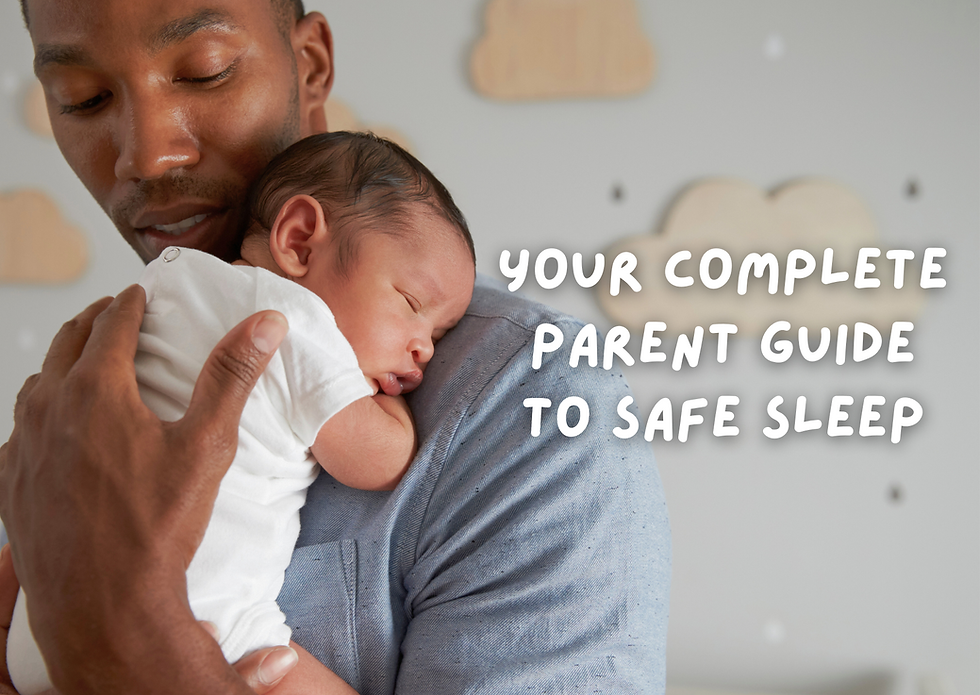Trick or Treating (& Party) Safety Tips for Parents: A Guide to a Fun & Safe Halloween
- emilias918
- Oct 30
- 4 min read

Trick or treating is often the highlight of Halloween for children — a thrilling chance to dress up as goblins, ghouls, and favourite characters while collecting sweets by the handful.
Beyond the excitement, Halloween activities offer valuable developmental benefits. Dressing up supports imaginative play, which boosts creativity and self-expression. Going from door to door encourages confidence, communication, and social skills — while decision-making and turn-taking are practised naturally along the way.
However, amidst all the spooky fun, it’s essential for parents to keep safety in mind.
Here’s our complete guide to Halloween trick or treating and party safety tips to ensure your little ones enjoy a magical and safe night out.
Is Trick or Treating Age-Appropriate?
Before heading out, consider whether trick or treating is suitable for your little one.
There’s no strict age limit, but it’s generally recommended that children under 2 don’t go door-to-door asking for treats. Instead, they can join the fun by dressing up, showing off their costumes, and enjoying new interactions with neighbours and adults.
This way, babies and toddlers still experience the excitement without the overwhelm of long walks or busy streets.

Top Trick-or-Treating Safety Tips
1. Always Go With an Adult
Young children should always have at least one trusted adult with them while trick or treating. We recommend teaming up with other parents or families in your area — it’s safer and makes the evening more social and fun.
Group trick or treating also helps children practise socialising, communicating politely, and walking safely in a group.
2. Keep Costumes Safe and Comfortable
Shop-bought costumes can look fantastic but aren’t always fire-resistant, so be extra cautious around candles or open flames — particularly in pumpkins. Use battery-powered tealights instead.
If a costume does catch fire, remember the Stop, Drop, and Roll rule from the National Fire Protection Association:
Stop – Movement fans the flames, so stop immediately.
Drop – Lie down and cover your face with your hands.
Roll – Roll on the ground to smother the flames.
Also note: Halloween costumes are classed as toys, not clothing, so they don’t go through the same fire safety testing.
Finally, make sure masks, wigs, or accessories don’t restrict your child’s vision or movement — comfort and visibility are key to avoiding trips or falls.
3. Plan Your Trick-or-Treat Route
Map out your route ahead of time in safe, well-lit residential areas. Stick to pavements and take extra care at road crossings.
Only visit homes displaying Halloween decorations — these are usually the ones happy to welcome trick-or-treaters.
Children can get excited when they spot a spooky display, so having a second adult on hand helps to manage the group safely and prevent little ones from running ahead.

4. Set Off Early
With the clocks already set back, it’ll be dark by around 5pm. Try heading out before dusk so children can enjoy the fun in daylight before it gets too dark or cold.
Keep the outing short and sweet — younger children may get tired, hungry, or need a break. Bringing snacks, a small drink, and a plan for toilet stops can help keep this a comfortable and happy time for little ones.
5. Be Seen in the Dark
Add reflective accessories to outfits or bags to make children more visible to cars and other pedestrians. Bright colours like orange or white also stand out well.
Glow-in-the-dark face paints, reflective tape, and fun glow sticks or wristbands can make safety part of the fun.
6. Bring a Torch or Lantern
A small torch, battery-powered lantern, or lit pumpkin bucket not only adds to the Halloween atmosphere but also improves visibility for both adults and children.
7. Practice Road Safety
It might sound obvious, but it’s easy to forget in the excitement. Always:
Use pedestrian crossings where possible
Hold hands with little ones
Check both ways before crossing
Avoid mobile phone use while walking or crossing the road
Setting a calm, safe example helps children build early road awareness skills.

Halloween Party Safety
And finally, for those celebrating indoors — Halloween parties can be a spook-tacular way to enjoy the festivities safely! But a few precautions help keep the fun running smoothly.
1. Check for Trip Hazards
Dim lighting adds to the atmosphere, but it can also make hazards harder to spot. Move tables, chairs, and loose wires out of the way before party games begin.
2. Choose Safe Party Games
Traditional activities like apple bobbing can pose risks (especially for younger children). Instead, try:
Ring Doughnut Challenge – Hang ring doughnuts or biscuits from string for a giggly, hands-free game.
Pumpkin Hunt – Hide small toy pumpkins or pictures around the room for children to find.
Monster Freeze Dance – Play music and let children dance like monsters, freezing when the music stops.
These options are just as exciting — and much safer for under 5s!
3. Keep Accessories Soft and Safe
If your little one’s costume includes props like wands, swords, or broomsticks, ensure they’re lightweight, flexible, and not too pointy. Accidents can happen easily during play, especially in groups.
4. Mind the Snacks
At parties, small sweets and hard treats can be choking hazards for toddlers. Choose soft, bite-sized snacks, fruit, or themed cupcakes.
For allergy-friendly fun, try fruit “monsters” made from grapes and apples or pumpkin-shaped sandwiches.
Click here for some more ideas & recipes.
A Fun and Safe Halloween for All
Halloween is a wonderful opportunity for children to explore creativity, imagination, and friendship — whether out trick-or-treating or celebrating at home.
With a few simple safety steps, your little pumpkins can enjoy every moment of the spooky season confidently and safely.

Additional Resources (all linked!)




Comments